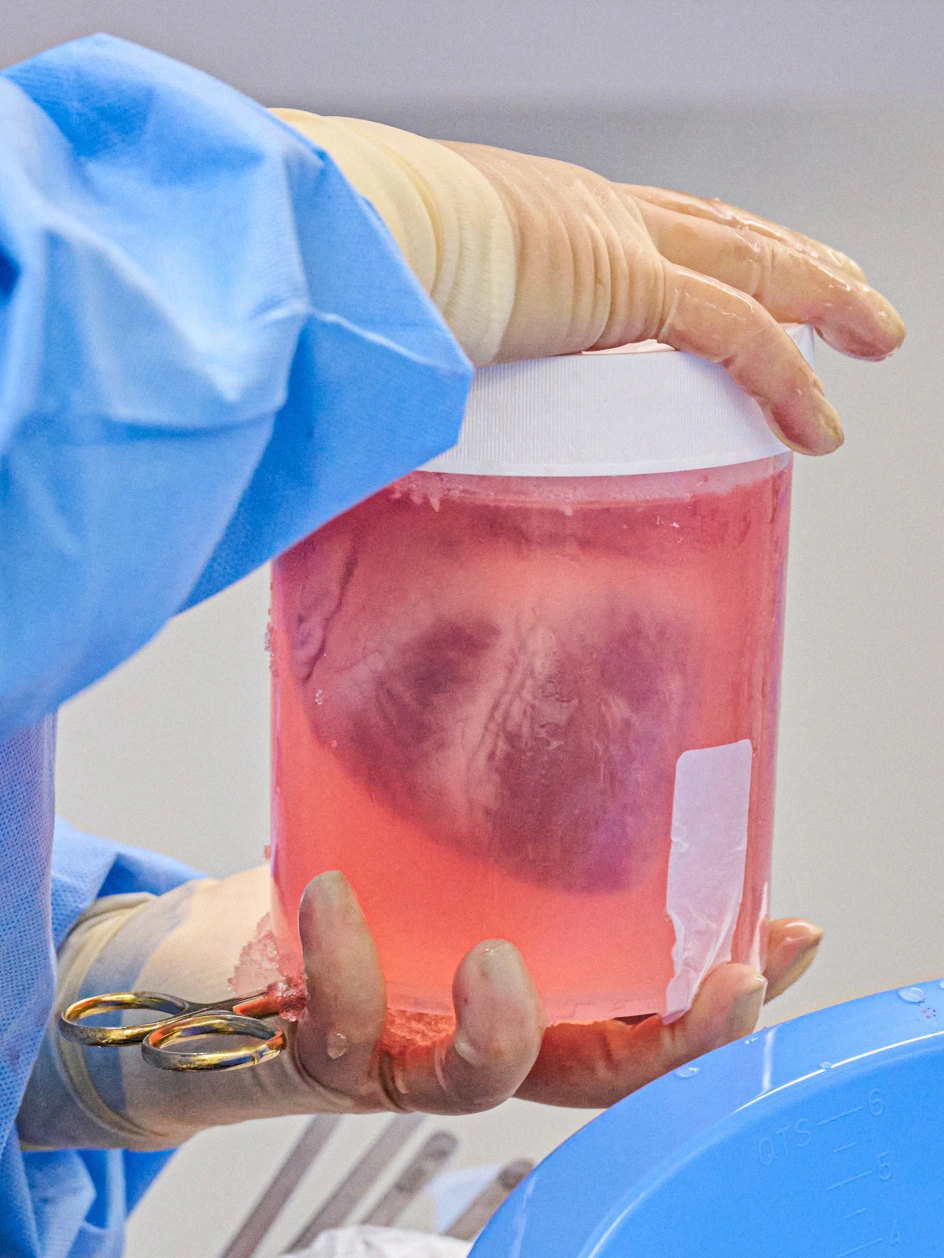

WHO eGenesis, Makana Therapeutics, United Therapeutics
WHEN 10 to 15 years
For two months last year, a 57-year-old man named David Bennett lived with a pig heart beating inside his chest. Surgeons at the University of Maryland had put it there to see: Could a gene-edited pig’s heart keep a person alive?
지난해 57세의 데이비드 베넷 씨는 두 달 동안 돼지 심장을 가슴에 달고 살았다. 메릴랜드 대학의 외과의사들은 유전자를 조작한 돼지의 심장이 사람을 살려둘 수 있는지 알아보기 위해 그것을 그곳에 놓아두었다.
Far more people need an organ transplant to live than can get one. There are around 130,000 organ transplants each year around the world, but many more people die waiting for an organ or because they never even made it onto a transplant waiting list.
훨씬 더 많은 사람들이 살기 위해 장기 이식을 받을 수 있는 것보다 더 많이 필요로 한다. 전 세계적으로 매년 약 13만 명의 장기 이식이 이루어지고 있지만, 더 많은 사람들이 장기 이식 대기자 명단에 오르지 못했기 때문에 장기를 기다리다가 사망한다.
Animal organs are one potential solution. But it’s not easy to overcome the human body’s natural revolt against them. For example, sugars on the surface of pig tissue can send our immune system into attack mode. Drugs can help mute the response, but it’s not enough. So biotech companies have used gene editing to modify pigs, removing those sugar molecules and adding other genes to make the pigs seem more human-like.
동물의 장기는 하나의 잠재적인 해결책이다. 하지만 그들에 대한 인체의 자연스러운 반항을 극복하는 것은 쉽지 않다. 예를 들어, 돼지 조직의 표면에 있는 설탕은 우리의 면역 체계를 공격 모드로 보낼 수 있다. 약물은 반응을 멈추게 할 수 있지만, 그것만으로는 충분하지 않다. 그래서 생명공학 회사들은 돼지들을 수정하기 위해 유전자 편집을 사용해왔고, 그 설탕 분자들을 제거하고 돼지들을 더 인간처럼 보이게 하기 위해 다른 유전자들을 추가했다.
By editing the DNA of pigs in this way, several biotech companies have now created animals whose organs are more compatible with human bodies. Though Bennett died, and a virus was found in the transplanted organ, his doctors claim the pig heart he received never developed classic signs of organ rejection. Now they’re planning studies with more patients.
이러한 방식으로 돼지의 DNA를 편집함으로써, 몇몇 생명공학 회사들은 이제 장기가 인간의 몸과 더 잘 맞는 동물들을 만들었다. 비록 베넷이 죽었고, 이식된 장기에서 바이러스가 발견되었지만, 그의 의사들은 그가 받은 돼지 심장은 장기 거부 반응의 전형적인 징후가 결코 발생하지 않았다고 주장한다. 이제 그들은 더 많은 환자들을 대상으로 한 연구를 계획하고 있다.
In the future, organ engineering might not involve animals at all. Researchers are in the early stages of exploring how to engineer complex tissue from the ground up. Some are 3D-printing scaffolds in the shape of lungs. Others are cultivating blob-like “organoids” from stem cells to imitate specific organs. In the long term, researchers hope to grow custom organs in factories.
미래에 장기 공학은 동물을 전혀 포함하지 않을지도 모른다. 연구원들은 복잡한 조직을 처음부터 조작하는 방법을 탐구하는 초기 단계에 있다. 일부는 폐 모양의 3D 프린팅 발판이다. 다른 사람들은 특정 장기를 모방하기 위해 줄기세포로부터 덩어리 같은 “유기체”를 배양하고 있다. 장기적으로, 연구원들은 공장에서 맞춤형 장기를 배양하기를 희망한다.
Whether they’re grown in animals or built inside manufacturing plants, an unlimited supply of organs could make transplantation more common, and give far more people access to replacement parts.
그것들이 동물에서 자라든, 제조 공장 안에서 지어지든, 무제한의 장기 공급은 이식을 더 일반적으로 만들 수 있고, 훨씬 더 많은 사람들이 대체 부품에 접근할 수 있게 할 수 있다.








